US Airways 2005 Annual Report Download - page 30
Download and view the complete annual report
Please find page 30 of the 2005 US Airways annual report below. You can navigate through the pages in the report by either clicking on the pages listed below, or by using the keyword search tool below to find specific information within the annual report.-
 1
1 -
 2
2 -
 3
3 -
 4
4 -
 5
5 -
 6
6 -
 7
7 -
 8
8 -
 9
9 -
 10
10 -
 11
11 -
 12
12 -
 13
13 -
 14
14 -
 15
15 -
 16
16 -
 17
17 -
 18
18 -
 19
19 -
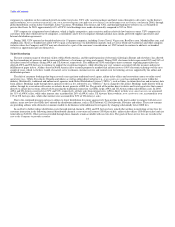 20
20 -
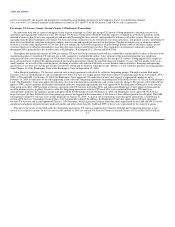 21
21 -
 22
22 -
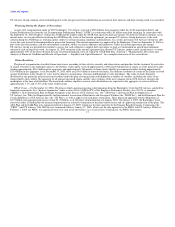 23
23 -
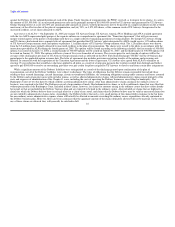 24
24 -
 25
25 -
 26
26 -
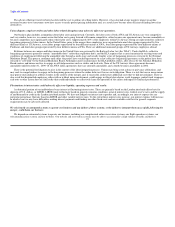 27
27 -
 28
28 -
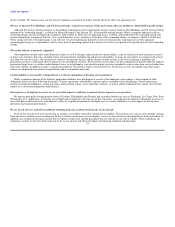 29
29 -
 30
30 -
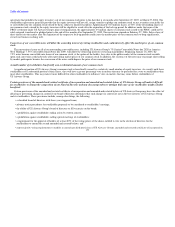 31
31 -
 32
32 -
 33
33 -
 34
34 -
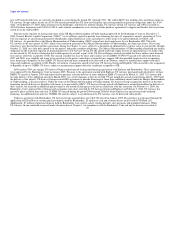 35
35 -
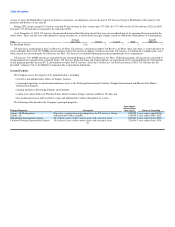 36
36 -
 37
37 -
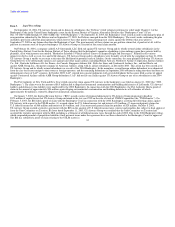 38
38 -
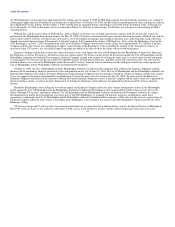 39
39 -
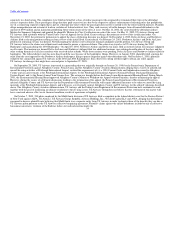 40
40 -
 41
41 -
 42
42 -
 43
43 -
 44
44 -
 45
45 -
 46
46 -
 47
47 -
 48
48 -
 49
49 -
 50
50 -
 51
51 -
 52
52 -
 53
53 -
 54
54 -
 55
55 -
 56
56 -
 57
57 -
 58
58 -
 59
59 -
 60
60 -
 61
61 -
 62
62 -
 63
63 -
 64
64 -
 65
65 -
 66
66 -
 67
67 -
 68
68 -
 69
69 -
 70
70 -
 71
71 -
 72
72 -
 73
73 -
 74
74 -
 75
75 -
 76
76 -
 77
77 -
 78
78 -
 79
79 -
 80
80 -
 81
81 -
 82
82 -
 83
83 -
 84
84 -
 85
85 -
 86
86 -
 87
87 -
 88
88 -
 89
89 -
 90
90 -
 91
91 -
 92
92 -
 93
93 -
 94
94 -
 95
95 -
 96
96 -
 97
97 -
 98
98 -
 99
99 -
 100
100 -
 101
101 -
 102
102 -
 103
103 -
 104
104 -
 105
105 -
 106
106 -
 107
107 -
 108
108 -
 109
109 -
 110
110 -
 111
111 -
 112
112 -
 113
113 -
 114
114 -
 115
115 -
 116
116 -
 117
117 -
 118
118 -
 119
119 -
 120
120 -
 121
121 -
 122
122 -
 123
123 -
 124
124 -
 125
125 -
 126
126 -
 127
127 -
 128
128 -
 129
129 -
 130
130 -
 131
131 -
 132
132 -
 133
133 -
 134
134 -
 135
135 -
 136
136 -
 137
137 -
 138
138 -
 139
139 -
 140
140 -
 141
141 -
 142
142 -
 143
143 -
 144
144 -
 145
145 -
 146
146 -
 147
147 -
 148
148 -
 149
149 -
 150
150 -
 151
151 -
 152
152 -
 153
153 -
 154
154 -
 155
155 -
 156
156 -
 157
157 -
 158
158 -
 159
159 -
 160
160 -
 161
161 -
 162
162 -
 163
163 -
 164
164 -
 165
165 -
 166
166 -
 167
167 -
 168
168 -
 169
169 -
 170
170 -
 171
171 -
 172
172 -
 173
173 -
 174
174 -
 175
175 -
 176
176 -
 177
177 -
 178
178 -
 179
179 -
 180
180 -
 181
181 -
 182
182 -
 183
183 -
 184
184 -
 185
185 -
 186
186 -
 187
187 -
 188
188 -
 189
189 -
 190
190 -
 191
191 -
 192
192 -
 193
193 -
 194
194 -
 195
195 -
 196
196 -
 197
197 -
 198
198 -
 199
199 -
 200
200 -
 201
201 -
 202
202 -
 203
203 -
 204
204 -
 205
205 -
 206
206 -
 207
207 -
 208
208 -
 209
209 -
 210
210 -
 211
211 -
 212
212 -
 213
213 -
 214
214 -
 215
215 -
 216
216 -
 217
217 -
 218
218 -
 219
219 -
 220
220 -
 221
221 -
 222
222 -
 223
223 -
 224
224 -
 225
225 -
 226
226 -
 227
227 -
 228
228 -
 229
229 -
 230
230 -
 231
231 -
 232
232 -
 233
233 -
 234
234 -
 235
235 -
 236
236 -
 237
237 -
 238
238 -
 239
239 -
 240
240 -
 241
241 -
 242
242 -
 243
243 -
 244
244 -
 245
245 -
 246
246 -
 247
247 -
 248
248 -
 249
249 -
 250
250 -
 251
251 -
 252
252 -
 253
253 -
 254
254 -
 255
255 -
 256
256 -
 257
257 -
 258
258 -
 259
259 -
 260
260 -
 261
261 -
 262
262 -
 263
263 -
 264
264 -
 265
265 -
 266
266 -
 267
267 -
 268
268 -
 269
269 -
 270
270 -
 271
271 -
 272
272 -
 273
273 -
 274
274 -
 275
275 -
 276
276 -
 277
277 -
 278
278 -
 279
279 -
 280
280 -
 281
281 -
 282
282 -
 283
283 -
 284
284 -
 285
285 -
 286
286 -
 287
287 -
 288
288 -
 289
289 -
 290
290 -
 291
291 -
 292
292 -
 293
293 -
 294
294 -
 295
295 -
 296
296 -
 297
297 -
 298
298 -
 299
299 -
 300
300 -
 301
301 -
 302
302 -
 303
303 -
 304
304 -
 305
305 -
 306
306 -
 307
307 -
 308
308 -
 309
309 -
 310
310 -
 311
311 -
 312
312 -
 313
313 -
 314
314 -
 315
315 -
 316
316 -
 317
317 -
 318
318 -
 319
319 -
 320
320 -
 321
321 -
 322
322 -
 323
323
 |
 |

Table of Contents
Our business is subject to weather factors and seasonal variations in airline travel, which cause our results to fluctuate.
Our operations are vulnerable to severe weather conditions in parts of our network that could disrupt service, create air traffic control problems, decrease
revenue, and increase costs, such as during hurricane season in the Caribbean and Southeast United States, and snow and severe winters in the Northeast
United States. In addition, the air travel business historically fluctuates on a seasonal basis. Due to the greater demand for air and leisure travel during the
summer months, revenues in the airline industry in the second and third quarters of the year tend to be greater than revenues in the first and fourth quarters of
the year. The results of operations of the combined company will likely reflect weather factors and seasonality, and therefore quarterly results are not
necessarily indicative of those for an entire year and the prior results of America West Holdings and US Airways Group are not necessarily indicative of the
Company's future results.
Employee benefit plans represent significant continuing costs to the sponsoring employers.
US Airways Group and its subsidiaries sponsor employee benefit plans and arrangements that provide retirement, medical, disability and other benefits to
our employees and participating retirees. Many of the benefits provided under these plans are mandated under various collective bargaining agreements, while
others are provided on a voluntary basis as a means to recruit and retain valuable employees. While we recently terminated certain defined benefit pension
plans and significantly reduced post-retirement medical benefits and other retiree benefits, the benefit obligations associated with the remaining employee
benefit plans and related costs represent a substantial continuing cost to the sponsors. In addition, many of these employee benefit plans are subject to federal
laws such as ERISA and the Internal Revenue Code, and must be maintained accordingly. Continued compliance with these employee benefit plans' rules is
necessary, as even unintentional failures to comply can result in significant fines and penalties. Employee benefit plans in general also are increasingly the
subject of protracted litigation, especially following significant plan design changes. Certain of the plans sponsored by the subsidiaries of US Airways Group
have undergone several changes in connection with the recent bankruptcy cases.
Risks Related to Our Common Stock
Our common stock has limited trading history and its market price may be volatile.
Because our common stock began trading on the NYSE on September 27, 2005, there is only a limited trading history for our common stock. The market
price of our common stock may fluctuate substantially due to a variety of factors, many of which are beyond our control, including:
• our operating results failing to meet the expectations of securities analysts or investors;
• changes in financial estimates or recommendations by securities analysts;
• material announcements by us or our competitors;
• movements in fuel prices;
• new regulatory pronouncements and changes in regulatory guidelines;
• general and industry-specific economic conditions;
• public sales of a substantial number of shares of our common stock; and
• general market conditions.
Substantial sales of our common stock after the merger could cause our stock price to fall.
Upon completion of all of the merger related equity transactions, we had approximately 77.1 million shares of common stock outstanding, and as of
December 31, 2005, we had approximately 81.7 million shares of common stock outstanding. Each of the new equity investors entered into a stockholders
24
